There are so many different elements to include in quality reading instruction, you might wonder how you could ever teach them all. At first glance, teaching compound words, for example, may not seem essential. But these words can be a very valuable tool for enhancing vocabulary and phonics instruction and even improving reading comprehension. That’s a high-value activity! What’s more, students can readily learn the concept and have fun with it. Being able to read longer words can be empowering for new readers and give them a sense of accomplishment. So, what exactly is a compound word? Read on to find out more and learn some tips and tricks on how to incorporate them into your instruction.
What is a compound word?
Compound words are two small words that come together to make a new, bigger word. What sets them apart from other multisyllabic words is that the meaning of the new word often relates to the meaning of the smaller words. For example, a cupcake is basically cake in a cup, so it’s called a cupcake! Pretty cool, right?
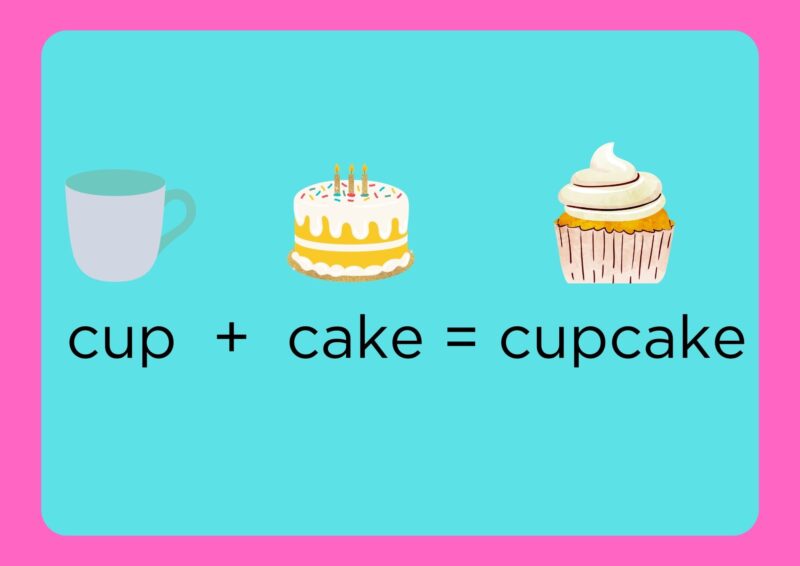
It’s important to note that not all compound words will connect back to the meaning of their smaller word parts. Lexia, an online intervention program, suggests that you can’t always rely on this strategy to help you understand what the new word means. For example, the word “outline” means a summary of information, but this definition isn’t directly related to the word “out” or “line.”
Many compound words will be familiar to students already. But drawing attention to these words and giving them a label encourages students to think critically about language. Also, by dissecting and playing with bigger words with your students, you can foster interest and engagement in learning about word patterns and origins.
What are the three types of compound words?
Let’s dig a little deeper. We can classify compound words into three specific categories: closed, open, and hyphenated.
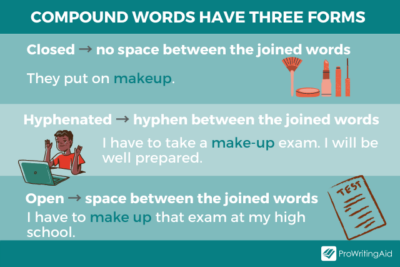
If you’re teaching older students, it might be helpful to distinguish between the types. But for instruction in the early elementary grades, focusing on the closed type is the most beneficial. Helping students with these words will support their ability to read new words, as well as spell two-syllable words. Here are some more examples of closed compound words. The more visuals you can include, the better!
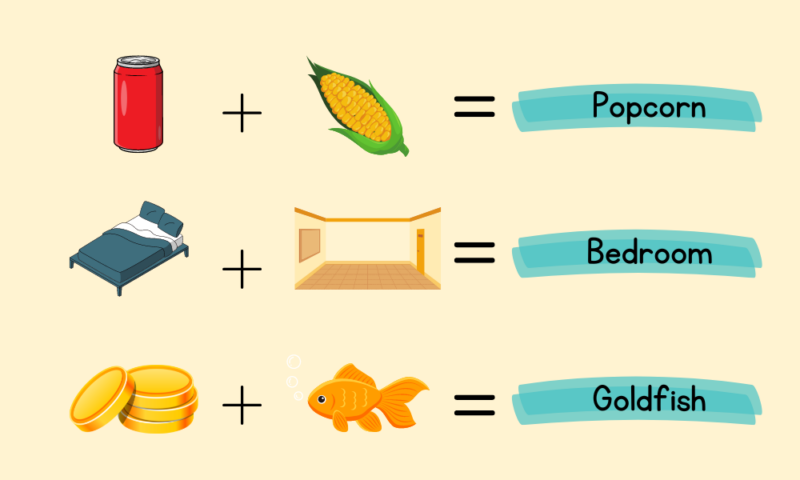
Why should I teach compound words?
English can seem scary and confusing at first, but there are so many interesting and predictable elements that can make it easier to learn. Understanding compound words can help make the language and rules more accessible for students.
Teaching these words also checks many different boxes for effective literacy instruction. In addition, when used strategically, these lessons can touch on each of the five main components of literacy. Here are the many different ways it can enhance students’ reading and writing skills. In addition, if you have a wide range of abilities in your class, lessons on compound words are easy to differentiate for all learners.
Vocabulary
When studying compound words, students gain exposure to familiar words as well as many new ones. On top of that, since these words are built of smaller real words, these lessons can quickly boost vocabulary knowledge. This can be particularly helpful for ESL students. Word lists with pictures also help increase understanding.
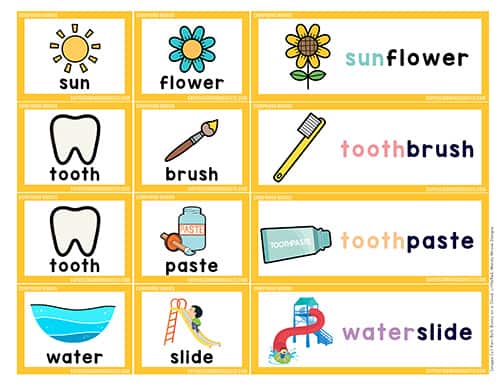
Another benefit of teaching students to break apart words in meaningful ways is that it sets them up to better understand morphology, or the study of word parts, like prefixes and suffixes. Grasping this concept will help them decode and comprehend more complex words as they get into more advanced content.
Phonics
Finding ways to reinforce phonics concepts in all aspects of our reading instruction is beneficial for students. When we focus on each individual word in compound words, we divide up words in meaningful ways. This can be absolutely eye-opening for some students. Syllabication, or breaking apart words into their smaller parts, is a great decoding strategy. AdaptedEd 4 Special Ed explains how using these words in instruction helps struggling readers who have difficulty with the concept of pulling apart words.
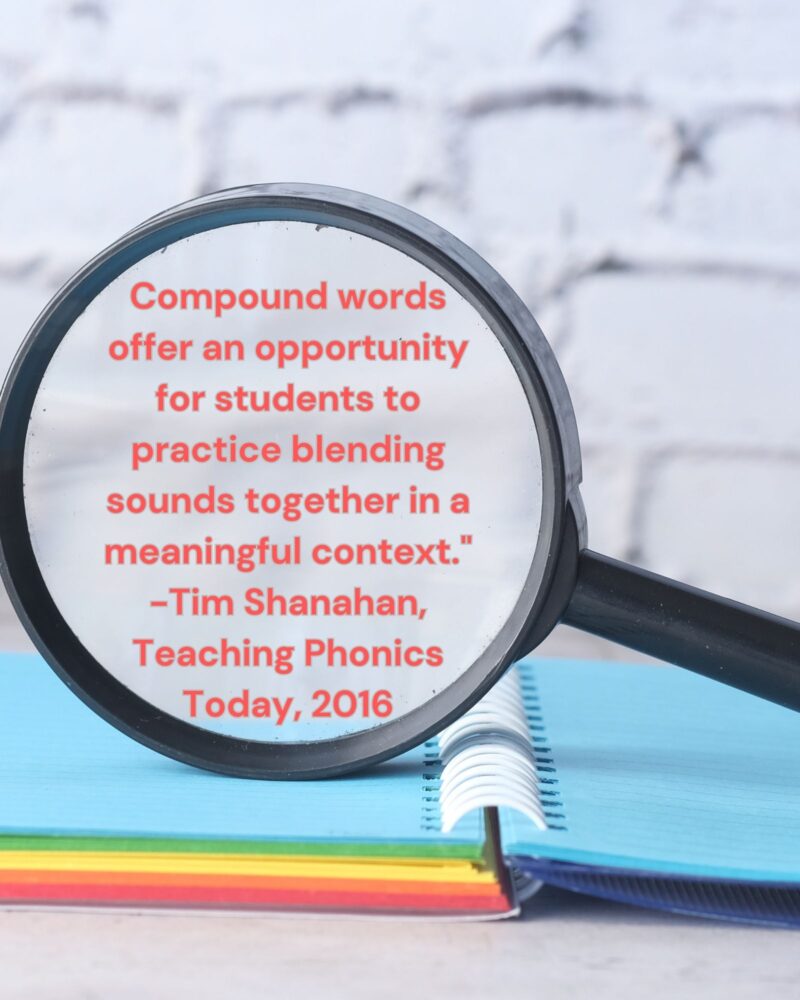
Phonemic Awareness
We know just how important phonemic awareness is for success in early literacy. When we focus on listening to how sounds come together to make words, including how words are broken into parts, we boost phonological and phonemic awareness. Here’s a great activity from The Reading Corner for teaching compound words to younger students as part of comprehensive phonemic awareness instruction.
Comprehension
By fostering our students’ growing vocabulary, we support their listening and oral comprehension as well. The more words students know, the more they can understand the stories we read to them and the discussions we have about content, as well as their lives. They will even be better equipped to learn new vocabulary with improved comprehension. It really does all come full circle!
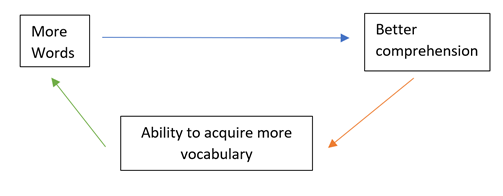
How should I use compound words in my instruction?
Explicitly teach the concept
Here are some great resources for teaching your students about compound words. First, make sure they have a good grasp on what these words are. Of course, how in-depth you go depends on the grade you teach, but all students should be familiar with them. We love Jack Hartmann’s videos for their playfulness and accessibility for younger kids and his video on this topic does not disappoint!
The next video offers an easy-to-understand definition as well as many concrete, engaging examples.
Another way to introduce these words is to explain the definition and then bring in objects that are compound words themselves. Check out this word list for suggestions. Show pictures and real-life examples whenever possible—the more hands-on the better!
Read aloud
Reading books to students of all ages supports their vocabulary development and comprehension. Books can help reinforce the concept of compound words and add an element of fun! Some of our favorite picks include: If You Were a Compound Word by Trisha Sue Speed Shaskan, Shortcut by Donald Crews, and Cloudy With a Chance of Meatballs by Judi Barrett.
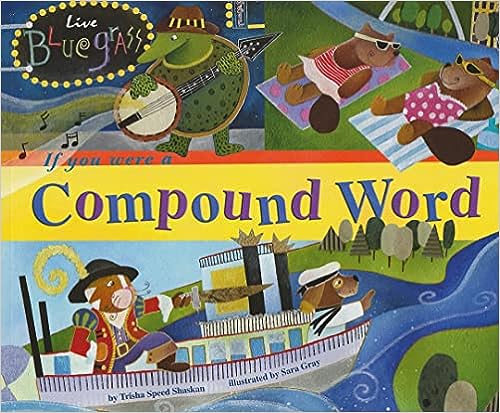
Brainstorm and practice
Use an anchor chart to come up with words and work on identifying which words can be classified as compound words. Students can also practice breaking up these words and draw a picture to demonstrate what they already know.
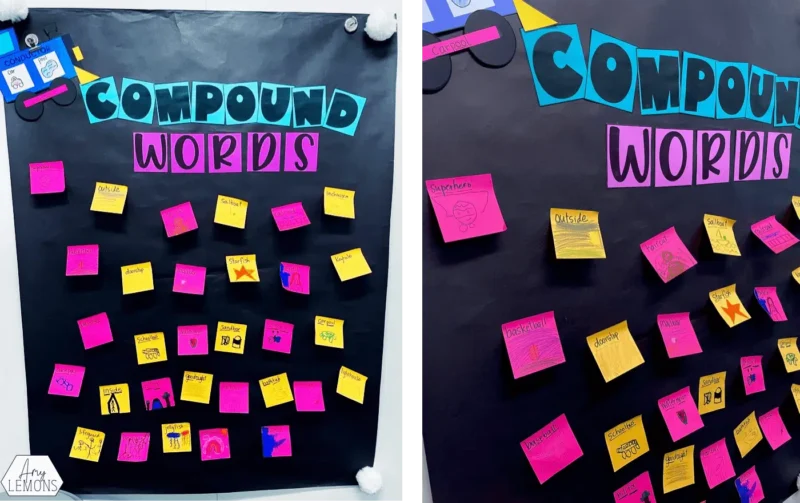
Vocabulary word cards with pictures are another great tool to reinforce the skill and also support ELL learners. Display them for visual reminders and use them for a variety of activities, including coming up with sentences with compound words.
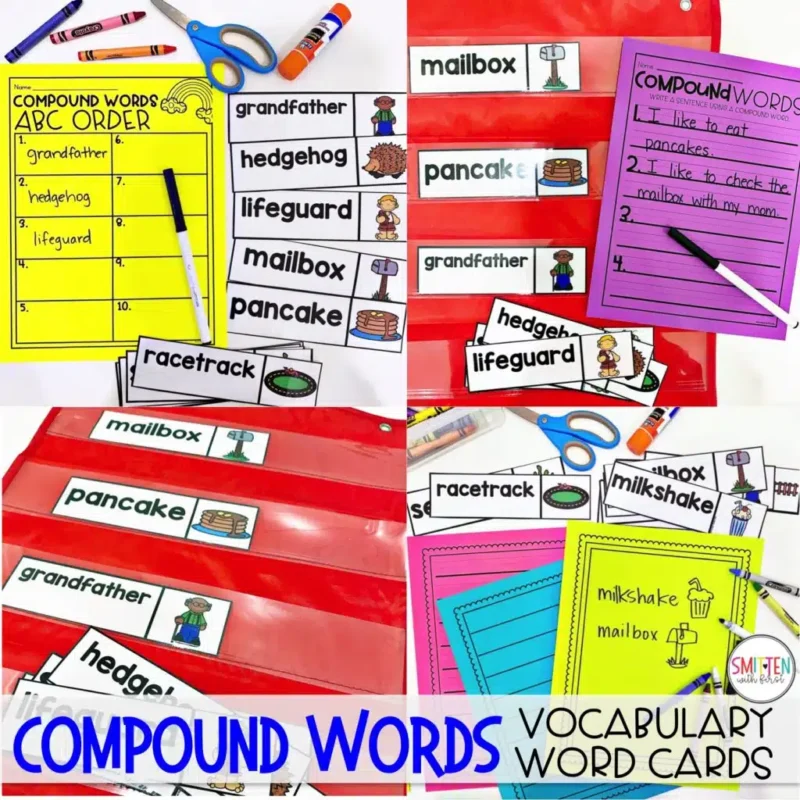
Play games
The possibilities for teaching compound words are endless! You can find so many different games and activities to boost students’ knowledge and skills. Get creative if you feel inspired to make your own materials, or check out all the engaging, online materials. These can be great as whole-group activities, but they also work well as centers for small-group instruction.
One of our favorite hands-on activities comes from Mrs. Richardson’s Class. Kids will adore using beloved Duplo blocks to combine word parts to make new compound words.
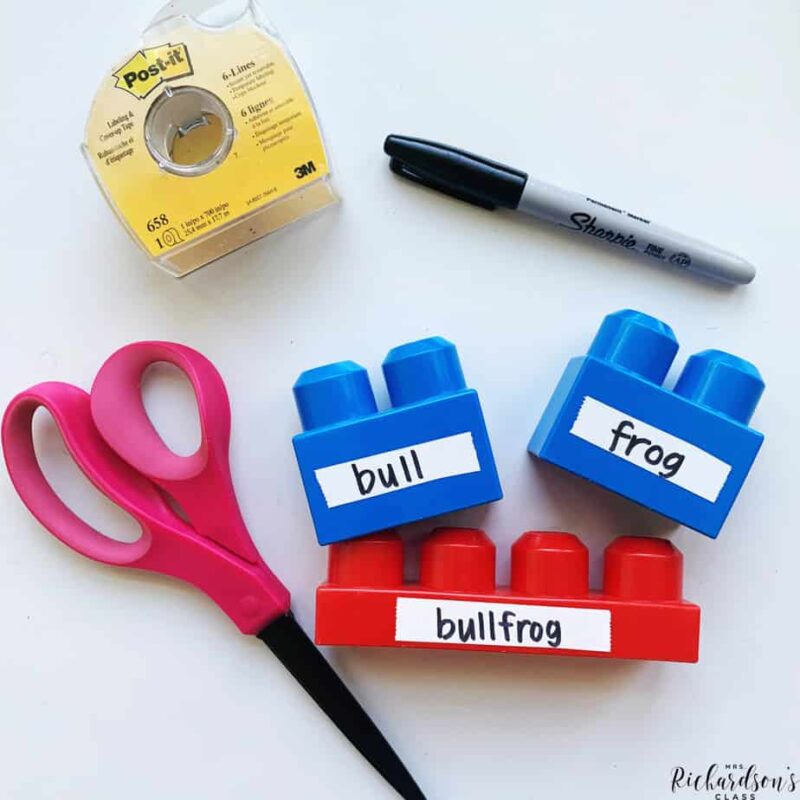
An effective strategy for reading longer words is to break them up into more manageable syllables. This Popsicle activity offers a helpful visual to see how we can divide words into parts to read them more quickly and easily.
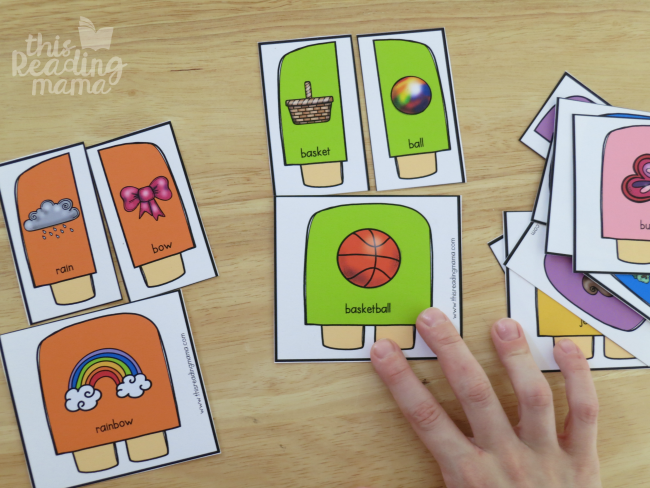
Check out another building activity using these fun puzzles from Playdough to Plato. Students start with a mix of word parts that they have to try to assemble into new, compound words. Once students have their best guess, they can find the corresponding puzzle piece with the completed word to see if it’s a match. Puzzles are always a blast for kids!
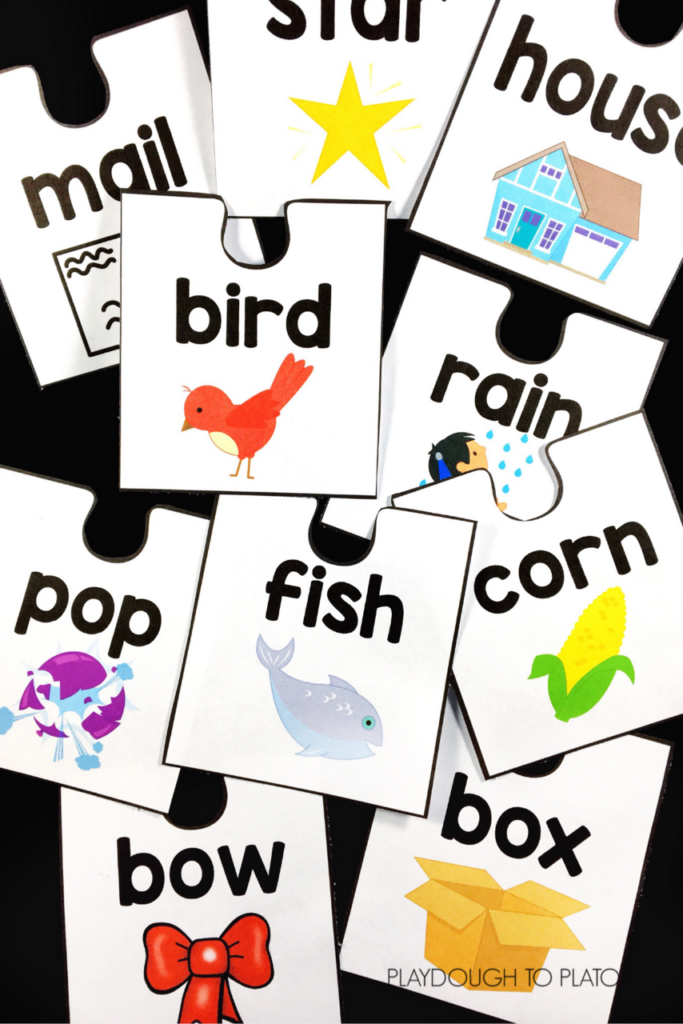
The Florida Center for Reading Research is another fantastic resource for finding activities that align with each of the five components of literacy. Check out their compound word resources woven throughout the phonics and vocabulary sections. You can find this great trivia game in the second-third grade resources under Vocabulary.
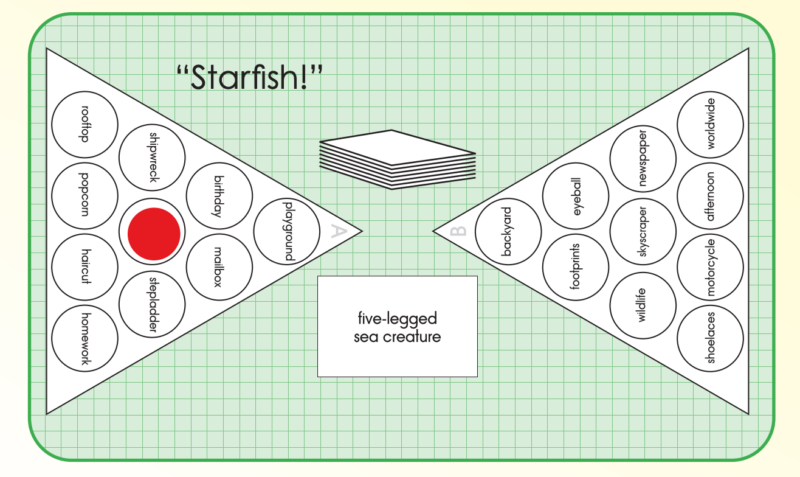
Here’s another fun game from FCRR for kindergarten and first grade that reinforces the concept of putting together compound words like a puzzle.
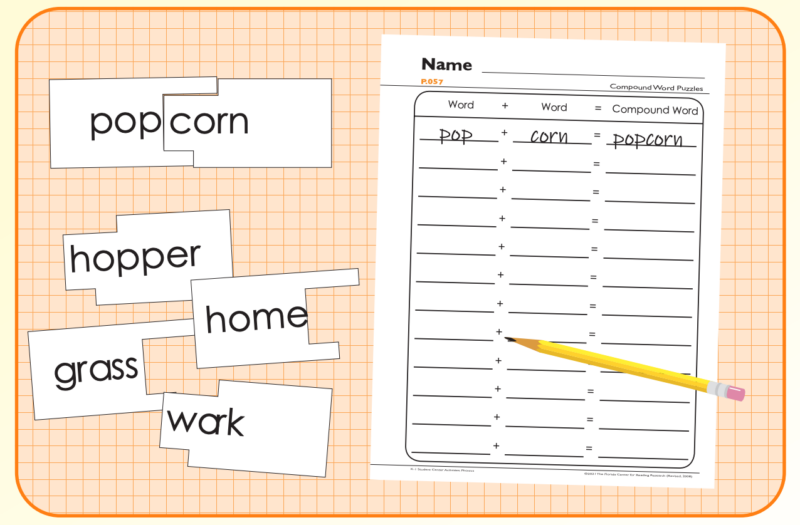
Another idea is a matching or memory game. Have some fun with the unique combinations that aren’t a match!
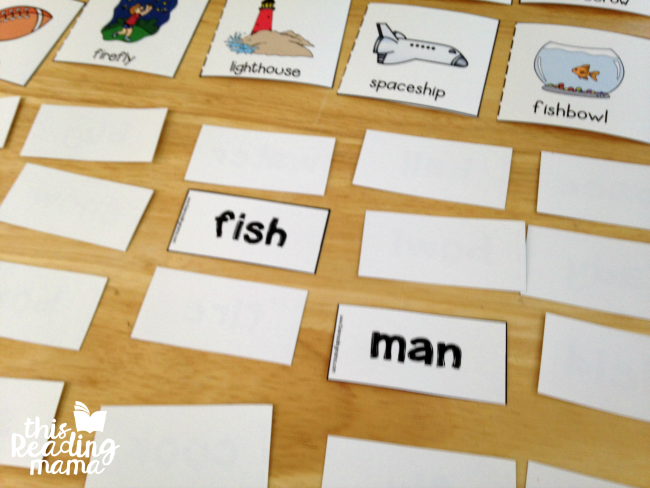
As you can see, there are so many different ways to incorporate compound words into effective literacy instruction. In addition to the suggestions above, you can also include word sorts, writing activities, and digital resources. If you want to create your own games or materials, here is an extensive list of compound words to get you started. Choose the words that would be most beneficial for your students to know, based on their level and background knowledge.
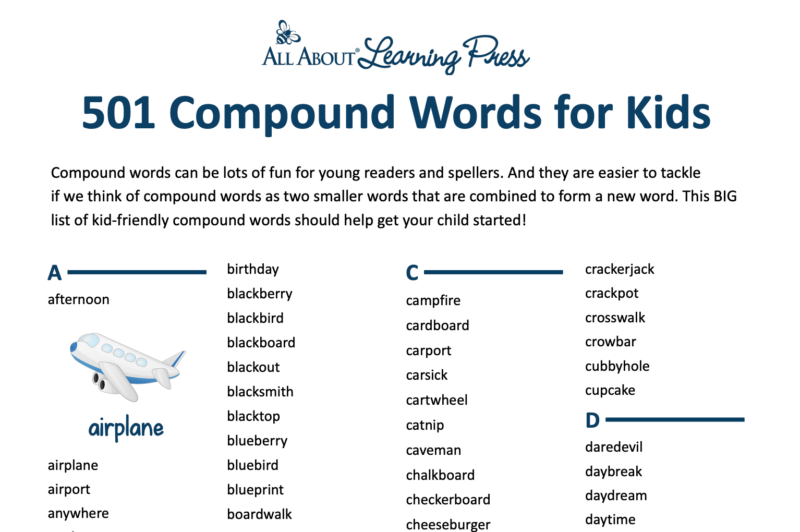
Want to learn more? Don’t miss:
10 Ways To Build ELL Vocabulary Skills
What Is the Science of Reading?
26 Fun Second Grade Reading Comprehension Activities

